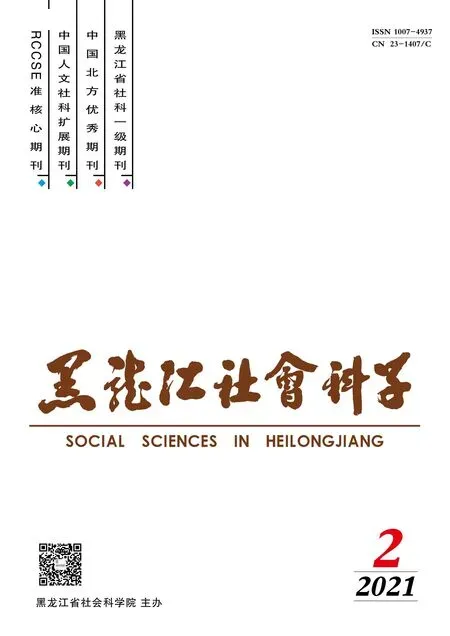ABSTRACTS
2021-01-12
TheSpiritofMusicEducationinAncientChinaandItsEnlightenment
LIU Tao-xiu
(MarxismCollege,HarbinUniversityofTechnology,Harbin150080,China)
Abstract: Music and education tradition is an important part of the excellent traditional culture of China. Ancient music has a wide range of meanings, including music, dance and poetry, which is roughly equivalent to today’s literature and art. Ancient times attach great importance to the moral role of music, which leads to the important topic of the debate of Taoism and art. The ancients emphasized the connection between music and heart, music and morality, music and harmony, emphasized the close relationship between Tao and art, and advocated the spirit of seeing Tao by art. This spirit can provide important enlightenment for the development of moral education work of socialism with Chinese characteristics and the development and prosperity of literature and art in the new era.
Keywords:Music Education; Heart; Morality; Harmony; Confucianism
TheDevelopmentofChineseExcellentTraditionalCultureSpiritinAntiEpidemic
CHAI Wen-hua, ZHANG Shou
(SchoolofPhilosophy,HeilongjiangUniversity,Harbin150080,China)
Abstract:Chinese traditional culture is formed in the history of suffering, which contains rich spiritual wisdom to deal with suffering. We summarize the core of practical rationality, collectivism, hardship and optimism in Chinese traditional culture, and investigate how it develops into the spirit of epidemic prevention under the popular COVID-19. It is of great significance to overcome and reflect on COVID-19 and to develop China’s excellent traditional culture.
Keywords:Chinese Excellent Traditional Culture Spirit; Anti Epidemic; Practical Rationality; Collectivism; Sense of Hardship; Optimistic Spirit
AnApproachtoMiddleLevelResearchinAdministration:
AnalysisofGovernmentWorkandItsFramework
REN Xiao-chun
(CollegeofPoliticalandPublicManagement,ShanxiUniversity,Taiyuan030006,China)
Abstract:The complementary of government process analysis and government system analysis has formed a series of research results of government behavior process, but it has still lacked the analysis of the combination of dynamic and static administrative process, image and abstract. This paper focuses on the practice of government work, and puts forward that the middle-level research of administration should pay attention to the practical proposition of “analysis of government work”. The analysis of government work takes a specific work as the analysis object, and analyzes the operation process and power of a certain work of the government, so as to make up for the deficiency of the analysis of government process and government system; at the same time, the interdependence and mutual agreement between the analytical framework of government work constituted by “system process technology mechanism” also reflects the unity of image and abstraction of public management process, the follow-up from macro to micro, and the comparison between theory and practice.
Keywords:Government Work; Government Behavior; Administration; Government Work Analysis; Process; Technology; Mechanism
TheHierarchicalStructureandBridgingStrategyof“DigitalDivide”
inNortheastRuralAreas
LIU Si-you, GE Dong-po, ZHANG Hua-lin
(InstituteofNewMedia,PekingUniversity,Beijing100871,China)
Abstract: In the context of building a digital village, the “digital divide” in rural areas is not only a current social problem, but also related to the implementation of the National Rural Revitalization Strategy. There is a problem of “digital divide” in the social structure of rural areas in Northeast China, which is embodied in the two levels of digital access gap and digital use gap, which is related to gender, education level and occupation. Through empirical research methods, this paper clarifies the reasons for the structural differences in the access and use of digital technology, and improves the digital level of rural residents from the aspects of digital literacy education for the middle-aged and the elderly, subsidies for farmers’ Internet equipment, and increasing care for rural women.
Keywords:Northeast Rural Areas; Internal Social Structure; Digital Divide; Digital Rural Construction
AestheticThinkingofTragedyTriggeredbyCOVID-19
SHEN Zheng
(CollegeofMediaandInternationalCulture,ZhejiangUniversity,Hangzhou310058,China)
Abstract:Tragedy is an important issue that humanists are unable to evade at any time, and also a key breakthrough point in the field of aesthetic research. COVID-19’s global pandemic is considered to be the biggest tragedy in the past hundred years. In China alone, there are many people infected with epidemic disease or died; all over the country once stopped work and school, which has a serious direct or indirect impact on people’s production and life. However, during the epidemic period, people used short video and other modern information technology means to show the noble professional sentiment of medical workers and the strong national spirit of fighting the epidemic, which showed that although the epidemic mercilessly separated the distance between people, it could not isolate the tragic spirit caused by the epidemic. During the period of isolation, people need more aesthetic comfort and more positive energy transmission. From the perspective of aesthetics, an in-depth analysis of the spirit of Chinese aesthetics embodied in this tragic event can give a new interpretation of the connotation of contemporary tragedy aesthetics.
Keywords:COVID-19; Tragedy Concept; Media Aesthetics; Anti Epidemic Short video
ExploringtheHistoryofRiverBasinandRevealingtheTrueMeaningofPlaceNames
——OntheMeaningofMudanjiang’sName
YAO Shou-peng
(StandingCommitteeofMudanjiangMunicipalPeople’sCongress,HeilongjiangMudanjiang157022,China)
Abstract: As for the origin and interpretation of Mudanjiang, almost all the current works call it a Manchu transliteration, not a Chinese place name. However, according to the requirements of toponymy, tracing back the history, investigating the etymology, and comprehensively analyzing the history, nationality, culture, geography and climate of Mudanjiang basin, we can conclude that Mudanjiang is a Chinese place name, and “Mudan” refers to peony. Mudanjiang, a place name, was established by Qi Junzao, a scholar of Qing Dynasty, on the basis of the historical fact that peony was widely planted in Bohai State in Tang Dynasty under the background of invasion of China by foreign powers and occupation of large areas of northeast territory by Tsarist Russia. This name carries the profound historical culture and beautiful implication, but also gives the connotation of Mudanjiang River Basin as a part of the sacred territory of the motherland.
Keywords:Place Name; Mudanjiang; Manchu; Tsarist Russia; Qi Junzao; Bohai State; Peony
